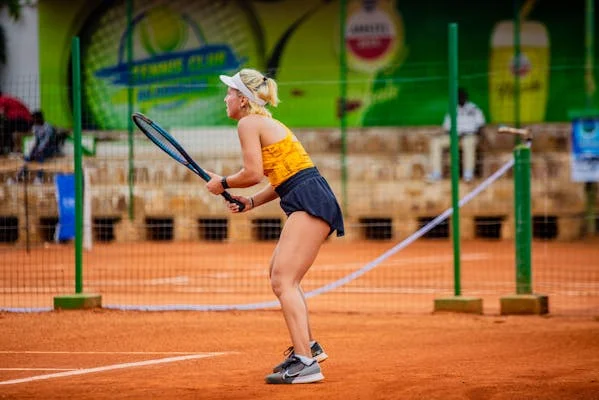In today’s fast-paced world, the intersection of technology and sports has become increasingly evident. One of the innovative concepts emerging in this field is sports harmonicode. This term may seem unfamiliar to many, but it encompasses a range of applications that enhance the experience for athletes, coaches, and fans alike. This article will explore what sports harmonicode is, how it is used, and its significance in the sports industry.
What is Sports Harmonicode?
Sports harmonicode refers to the systematic analysis and application of harmonic principles in sports. This concept involves using mathematical models and algorithms to improve performance, enhance training methodologies, and optimize strategies. By analyzing patterns and rhythms within sports data, coaches and athletes can make informed decisions that lead to better results.
Key Components of Sports Harmonicode
- Data Analysis:
- Analyzing performance data to identify trends and areas for improvement.
- Utilizing software tools to visualize data and track progress.
- Performance Optimization:
- Developing training plans based on harmonic patterns.
- Tailoring strategies to individual athlete strengths and weaknesses.
- Fan Engagement:
- Creating interactive platforms for fans to engage with real-time statistics and analysis.
- Enhancing the viewing experience through technology.
The Importance of Sports Harmonicode in Training
The use of sports harmonicode in training has revolutionized how athletes prepare for competitions. It provides insights that were previously unattainable through traditional training methods. Here are some benefits:
- Improved Training Efficiency: Athletes can focus on specific areas that require improvement, leading to more efficient training sessions.
- Personalized Programs: Training programs can be tailored to individual needs, ensuring athletes maximize their potential.
- Real-Time Feedback: Coaches can provide instant feedback during training sessions, allowing for immediate adjustments.
How Sports Harmonicode Enhances Competitive Strategy
Understanding the harmonic aspects of sports also plays a crucial role in shaping competitive strategies. Teams that leverage sports harmonicode can gain a competitive edge by:
- Analyzing Opponent Patterns: By studying opponent data, teams can predict plays and develop counter-strategies.
- Game Theory Applications: Applying harmonic principles allows for better decision-making during games, leading to improved outcomes.
- Strategic Adjustments: Coaches can make real-time adjustments based on ongoing data analysis during games.
Tools and Technologies in Sports Harmonicode
To implement sports harmonicode effectively, various tools and technologies are used:
| Tool/Technology | Description |
|---|---|
| Data Analytics Software | Analyzes performance data and provides actionable insights. |
| Wearable Technology | Tracks athlete performance metrics in real-time. |
| Simulation Software | Models game scenarios to optimize strategies. |
| Video Analysis Tools | Breaks down game footage for detailed analysis of performance. |
Real-World Applications of Sports Harmonicode
- In Team Sports: Coaches use sports harmonicode to devise game plans based on player statistics and opponent tendencies. This ensures that strategies are data-driven and effective.
- In Individual Sports: Athletes like runners or swimmers benefit from personalized training regimens that focus on their specific harmonic patterns, allowing them to refine their techniques.
- Fan Interaction: Organizations are using sports harmonicode to create apps that allow fans to interact with live data during games, enhancing engagement and understanding of the sport.
Challenges in Implementing Sports Harmonicode
While the advantages of sports harmonicode are clear, several challenges must be addressed:
- Data Overload: The sheer volume of data can be overwhelming, making it difficult to extract meaningful insights.
- Integration: Incorporating new technologies with existing systems can be complex.
- Cost: Investing in advanced technologies can be prohibitively expensive for some teams or organizations.
Conclusion
Sports harmonicode is transforming how we understand and engage with sports. By leveraging data analysis, optimizing performance, and enhancing fan interaction, this innovative concept offers a multitude of benefits. As technology continues to evolve, the applications of sports harmonicode will likely expand, making it an essential aspect of modern sports.
Frequently Asked Questions (FAQs)
What is the primary goal of sports harmonicode?
The primary goal of sports harmonicode is to analyze performance data and optimize training and competitive strategies through mathematical models and algorithms. This helps athletes and coaches make informed decisions that enhance performance.
How can sports harmonicode benefit individual athletes?
Sports harmonicode benefits individual athletes by providing personalized training programs based on their specific performance data. This approach allows them to focus on areas that require improvement and maximize their potential.
Can teams use sports harmonicode to analyze their opponents?
Yes, teams can use sports harmonicode to study opponent patterns and statistics, enabling them to develop effective game strategies and counterplays.
What types of technologies are involved in sports harmonicode?
Technologies involved in sports harmonicode include data analytics software, wearable technology, simulation software, and video analysis tools. These technologies help in tracking performance and analyzing data effectively.
What challenges are associated with implementing sports harmonicode?
Some challenges include data overload, integration issues with existing systems, and the high costs of advanced technologies. Teams must navigate these challenges to fully leverage the benefits of sports harmonicode.
Is sports harmonicode only applicable to team sports?
No, sports harmonicode is applicable to both team and individual sports. It can enhance training and performance in a wide range of sports by focusing on specific harmonic patterns relevant to each discipline.







